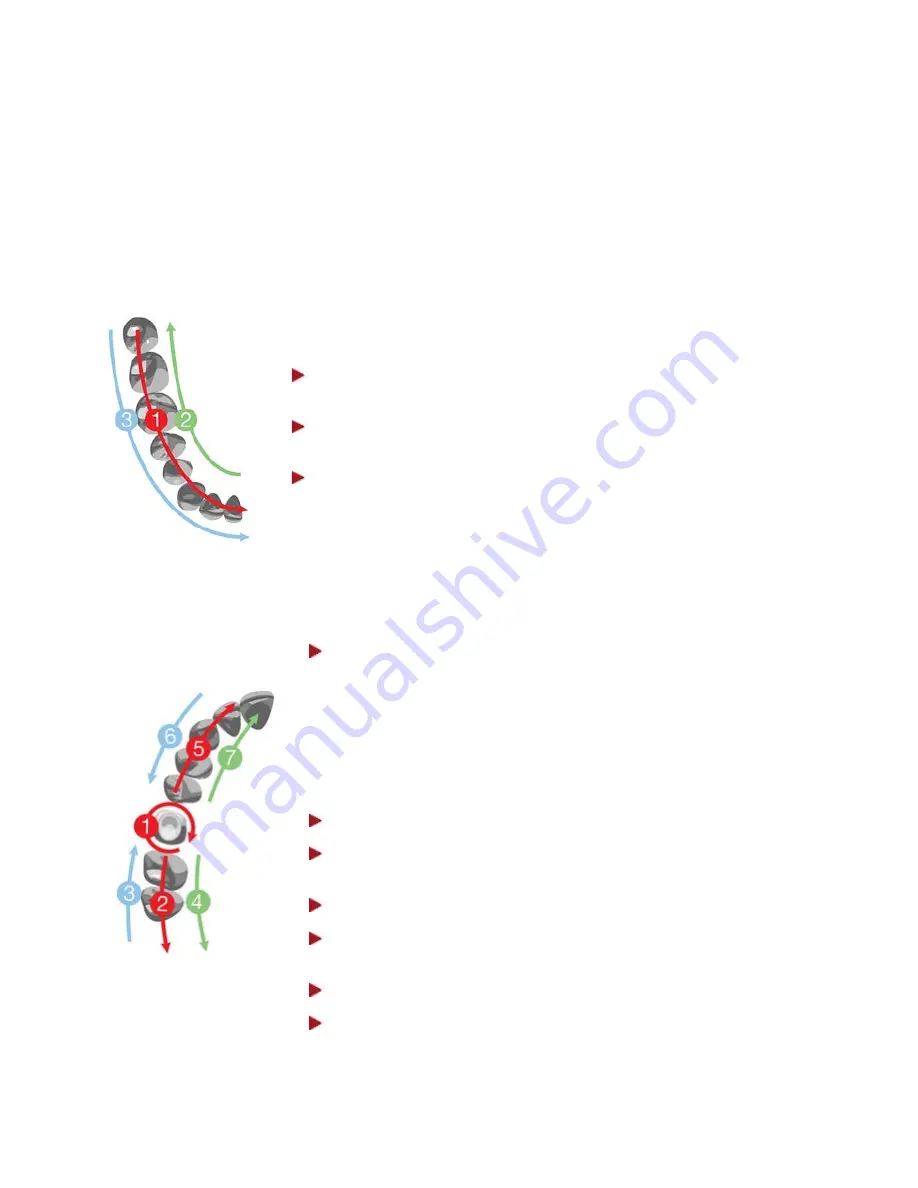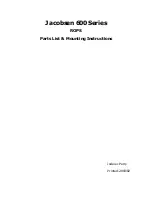
Centrals
When scanning the first sweep of centrals, it is important to cover both, lingual and labial sides of the
teeth. The easiest method is to slowly wiggle the scanner tip between the labial and lingual sides.
The centrals require more attention than molars. Therefore, the scanner tip should move a little slower in
that region.
Posterior quadrant
The general principles are applied in the following 2 examples:
Example I: Lower quad, antagonist
Step 1:
Antagonist: Start directly on the occlusion (the first molar),
then sweep along the occlusion.
Step 2:
Lower jaw: Roll 45-90 degrees to the lingual side and
sweep to the second molar. Use the tip to keep the tongue away.
Step 3:
Roll to the buccal side and complete the buccal sweep.
Example II: Upper quad, with preparation
Step 1:
Start with the preparation:
•
Go to the occlusal side of the preparation.
•
Roll to the palatal side.
•
Roll to the buccal side.
•
Rotate almost 90 degrees to get the best angle for the
approximal sides and contact point both, distal and mesial.
•
Rotate back to the occlusal.
Step 2:
Swipe along the occlusion.
Step 3:
Upper jaw: Roll 45-90 degrees to the buccal side and
complete the buccal sweep on one side of the preparation.
Step 4:
Roll to the palatal side and complete the sweep.
Step 5:
Complete scanning on the other side of the preparation by
performing the occlusal sweep first.
Step 6:
Perform the buccal sweep.
Step 7:
Perform the palatal sweep.
44
















































